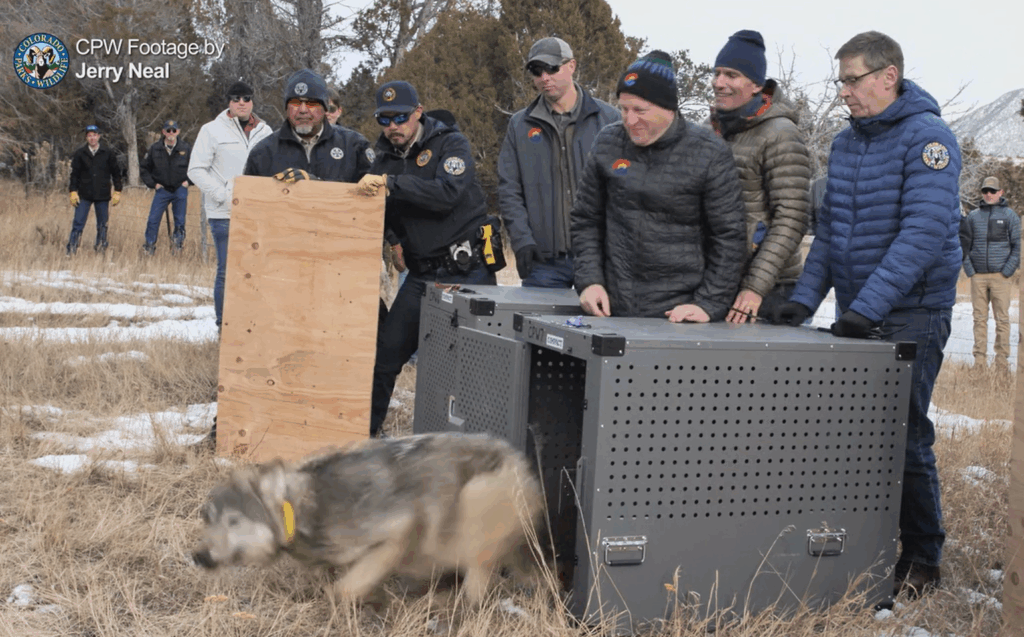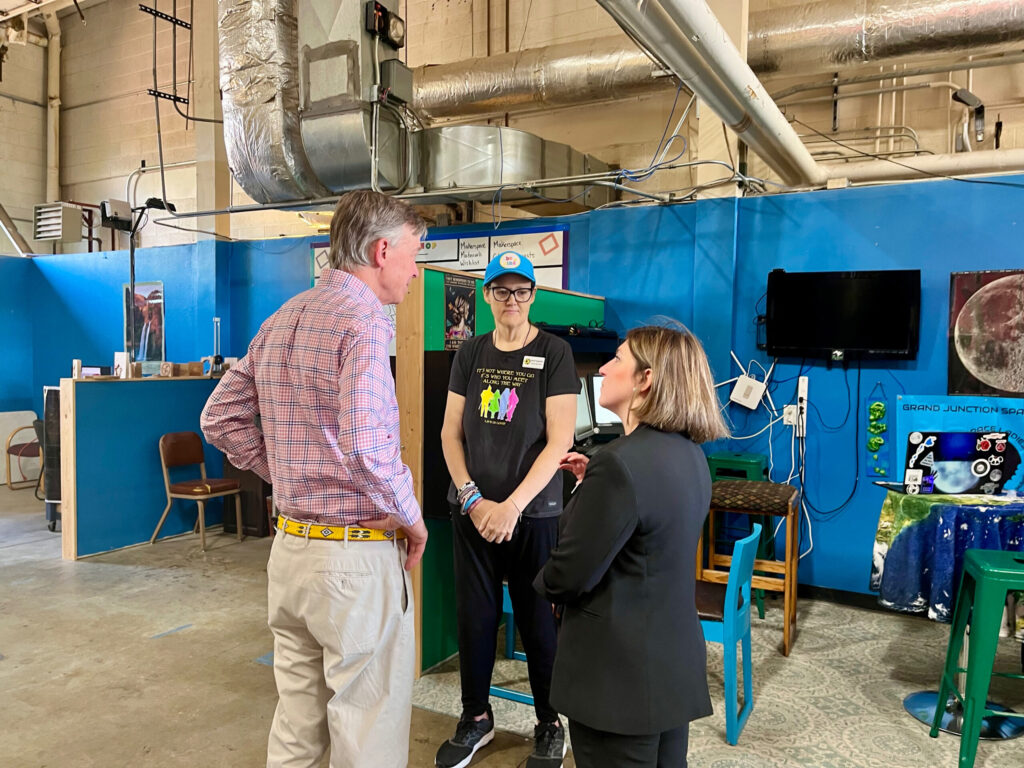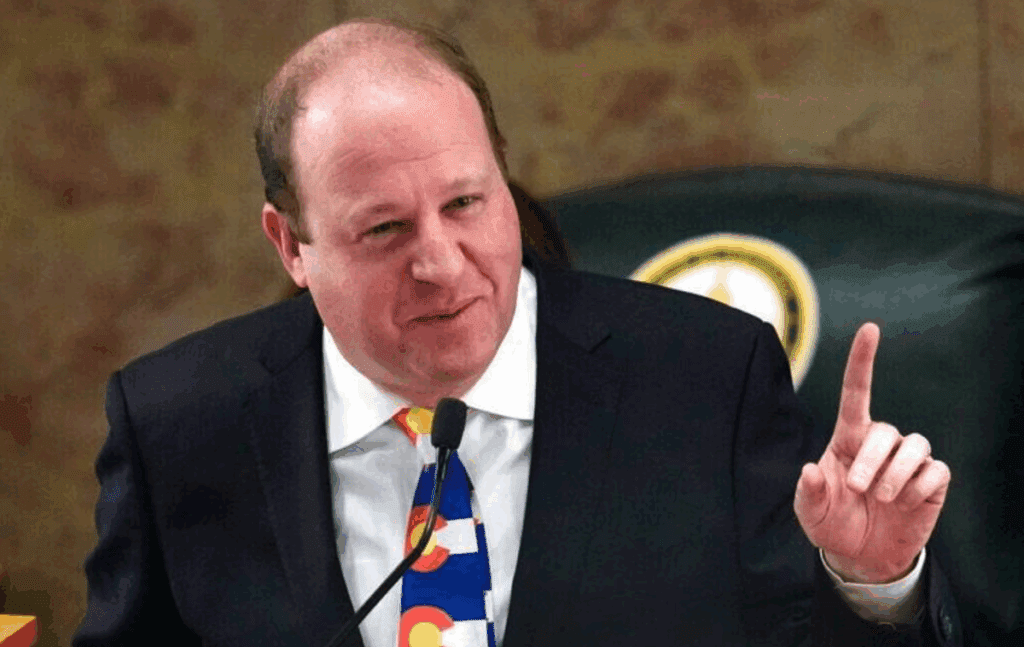Mayor Mike Johnston sees ‘path’ to getting 1,000 homeless people off of Denver’s streets by Dec. 31

Denver Mayor Mike Johnston on Monday expressed confidence he can deliver on his promise to get 1,000 homeless off of the city’s streets before the year ends.
“I think it’s more and more possible every day,” Johnston told The Denver Gazette. “I am optimistic that we have a path to get there. But more than that, I’m grateful every time I get to see one person who’s made it off the streets and come indoors.”
So far, Johnston’s administration has transitioned nearly 600 people into temporary shelters, according to a city-maintained dashboard that tracks Denver’s progress.
Johnston has roughly two weeks to get another 416 people into transitional housing.
“We knew when we started it was going to be incredibly ambitious,” he said. “We knew it’d be historic if we could pull it off. But we also knew it actually fit the scale of the need.”
He added, “You know, what we try to do is look at not what is an impressive number, but what actually helps solve the problem.”
In an apparent attempt to deliver on Johnston’s “incredibly ambitious” goal, the city on Tuesday announced plans to sweep seven homeless camps before Dec. 31.
It’s unclear how many residents live in the seven homeless camps, but officials said homeless people have been receptive to the city’s offers to move them into shelters.
Temperatures in Denver have plunged at night in the last several days, conditions that likely will persist through the holidays, and, in theory, make it easier to persuade the city’s “unsheltered” population – those who live in public places, such as streets and parks – to move into a shelter.
Denver has spent millions of dollars in the last several months to acquire hotels and purchase “tiny” housing units for homeless people, and officials said the city has secured enough housing units to reach the mayor’s goal of housing 1,000 individuals by Dec. 31.
Assessing his strategy, Johnston said it has “never happened” in Denver’s history, in which the city has shut down an encampment and immediately moved people to shelters.
“We’ve done it four times. We’ll do it another eight or nine times before the year is out,” he said.
City officers echoed the mayor’s confidence.
“While we acknowledge the progress made so far, we also understand the urgency of the situation and are fully aware of the challenges we face in meeting our ambitious goal,” a city spokesperson told The Denver Gazette. “As more units continue to become available, we are confident we have a path to reach our goal.”
Johnston’s focus on homelessness was expected. During his campaign, he promised to solve homelessness in his first term as mayor. Hunkering down, his administration activated an emergency center, appointed a homeless adviser, and sought the cooperation of councilmembers, who have agreed to fund his efforts.
Homelessness is among the city’s most palpable problems.
Indeed, of Colorado’s major cities, Denver saw the biggest increase in the number of homeless people – 5,818 as of January, up from 4,794 last year, according to a point-in-time count that offers a single night’s snapshot of the crisis back in January.
Between 2022 and 2023, the number of “unsheltered” people grew by 33%, from 2,078 to 2,763, according to the survey.
Undergirding Johnston’s promise to end homelessness is an approach popular among the city’s homeless advocacy groups: “housing first.” The idea is to respond to an individual’s most acute need first, which is housing, and then offer other services, such as mental health treatment, later.
The Colorado Coalition for the Homeless explained the concept this way: “It is important to note that housing first does not mean ‘Housing Only.’ Rather, Housing First best practices dictate that intensive treatment and case management be offered to those housed through the program.”
But some aren’t convinced that homelessness is only or primarily a housing affordability problem, in which, if housing becomes more accessible, people would cease to live on the streets.
Advocates like Craig Arfsten, president and co-founder of Citizens for a Safe and Clean Denver, said while his group supports Johnston’s promise to end homelessness, he urged the city to turn its attention to “recovery-oriented solutions for Denver’s addiction, mental health, and unsheltered homelessness crisis.”
“Denver has placed a focus on housing affordability since 2005, and we all see the results,” Arfsten earlier said. “It’s time to consider the role that drugs and mental illness play into why someone remains chronically unsheltered.”
Even some housing first advocates have hinted of their wariness with Johnston’s strategy of shifting money to “micro-communities,” which they view as temporary, as opposed to long-term housing programs.
In the interview with The Denver Gazette, Johnston defended his “housing first” approach, arguing that moving people into shelters first is key.
“We do think people stabilize the most and the fastest by getting them immediately into housing,” Johnston said. “Things like delivering mental health services – it’s very hard to do if someone’s sleeping in a tent or on the sidewalk because you just can’t get the stability and continuity to provide services.”
Residents surrounding the “micro-community” centers have pushed back against building the sites, and, in some instances, their opposition forced the city to cancel plans to erect housing for homeless people in their neighborhoods.
“There have always been folks who thought that social change was too fast,” Johnston said of the criticism. “This is a life or death issue, and we have an obligation to get people off the streets and into housing as fast as we can.”
Johnston’s emphasis on housing first and the amount of money the city is spending on homelessness have set Denver apart from its neighbors.
Aurora, for example, spent about $5.6 million on homelessness last year, which translated to roughly $10,000 per homeless person, based on the most recent count. Denver, on the other hand, is poised to spend half a billion dollars on the crisis over two years. Aurora’s spending more closely mirrored that of Colorado Springs, which earmarked about $6.2 million for homelessness this year.
So far, Denver’s councilmembers have supported the mayor’s initiatives, although a few have begun to press for more transparency in how the city is spending taxpayer dollars.
Jamie Torres, the councilmember from District 3 and president of the City Council, told The Denver Gazette that the transition into the units “should be done with care.”
“I know the mayor wants to bring 1,000 inside by end of year, and I understand the humanitarian obligation to help get residents off the street, but I have told him and Cole Chandler that I think doing it right is the priority over doing it fast,” Torres said.
Officials said the city sits on the verge of acquiring up to 1,400 units for homeless people.
“I think getting the units identified, councilmembers and community informed, etc., by the end of the year is also an achievable goal versus filling 100% of the units ASAP,” Torres said.
The mayor said the urgency is “absolutely warranted.”
“All the work for the units is worth it because when you actually get these units up and running, now there’s a place that people can move to,” Johnston said.



noah.festenstein@denvergazette.com
















